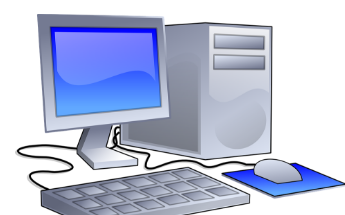By: R. Brady
Televisions. Phones. Computers. Tablets. Nowadays we can’t go anywhere without seeing one of these devices or using one. It seems as if electronics are “taking over the world.” At home, around town, in stores, at the park — their influence is everywhere. And now, their influence has impacted our classrooms. The traditional paper and pencils have been replaced by iPads and styluses. Essays, math equations, and other assignments we used to write by hand are now typed onto a computer screen. Does this influence enhance or hamper our education?
First, let’s start with the facts. It is obvious that too much time staring at a screen will negatively affect you. What many people are unaware of is how serious those consequences may be. Electronic screens can affect eyesight, brain activity, or even social skills. A child with an electronic is isolated from others, causing problems with conversation and etiquette (Parker). However, there are also many convincing studies that show the “iPad education” is working. One study found that, after given the iPads, students at the University of California Irvine medical school scored 23% higher on national exams (Wainwright). The use of iPads can help a student study, take notes, read electronic textbooks, view grades, and more.
In seventh grade, I was given an iPad to use for schoolwork, and I found that the electronic helped me in and out of class. I was able to quickly type notes during a lecture or write down my homework in an app. At home, I could use my iPad to do homework, study, or review the notes I had written in class. I was even able to participate in some apps specifically designed for schools that allowed a student to send his or her work to their teachers. Despite these benefits, I found my screen time increase immensely. Before, I had minimal use — an occasional text, some typing on the computer, maybe a brief game on the Wii. Now, I was spending many hours at school using the iPad, as we used them in almost every class, and I was spending even more time at home to study or do homework. As I was introduced to more and more time, I began to desire it more. The occasional text on my phone extended to long group conversations. I found myself aimlessly scrolling through the iPad screens with no specific purpose.
These effects are not very serious, yet if I had continued this habit, it may have led to some social issues. I now try to limit my electronic intake, yet I must mention that I write this article while typing on a computer. A large problem for me is that I have to use my iPad for many occasions, such as typing an article. Some teachers require that a student must use their iPad as well. Taking notes is much more efficient when using an iPad.
One question that should be addressed more is how helpful are these electronics? Using an iPad keyboard in class might be faster, but taking notes by hand makes it easier to remember what was written. In my classes at school, the majority of students use the iPads to type, but there are always a few resilient classmates who continue to use the time-honored pencil and paper.
From this I have concluded that the pencil and paper are not extinct and are still often preferred to an electronic device. The truth is that no matter how hard we try, we escape the use of electronics because of the need our society has placed on them in this day and age. My suggestion to all children, students, and adults alike is to try to reduce the time you spend staring at a screen as much as possible. The answer to the popular question “paper or electronic” is simply whatever you prefer.
 Tempus Magazine By Students, For Students
Tempus Magazine By Students, For Students 



